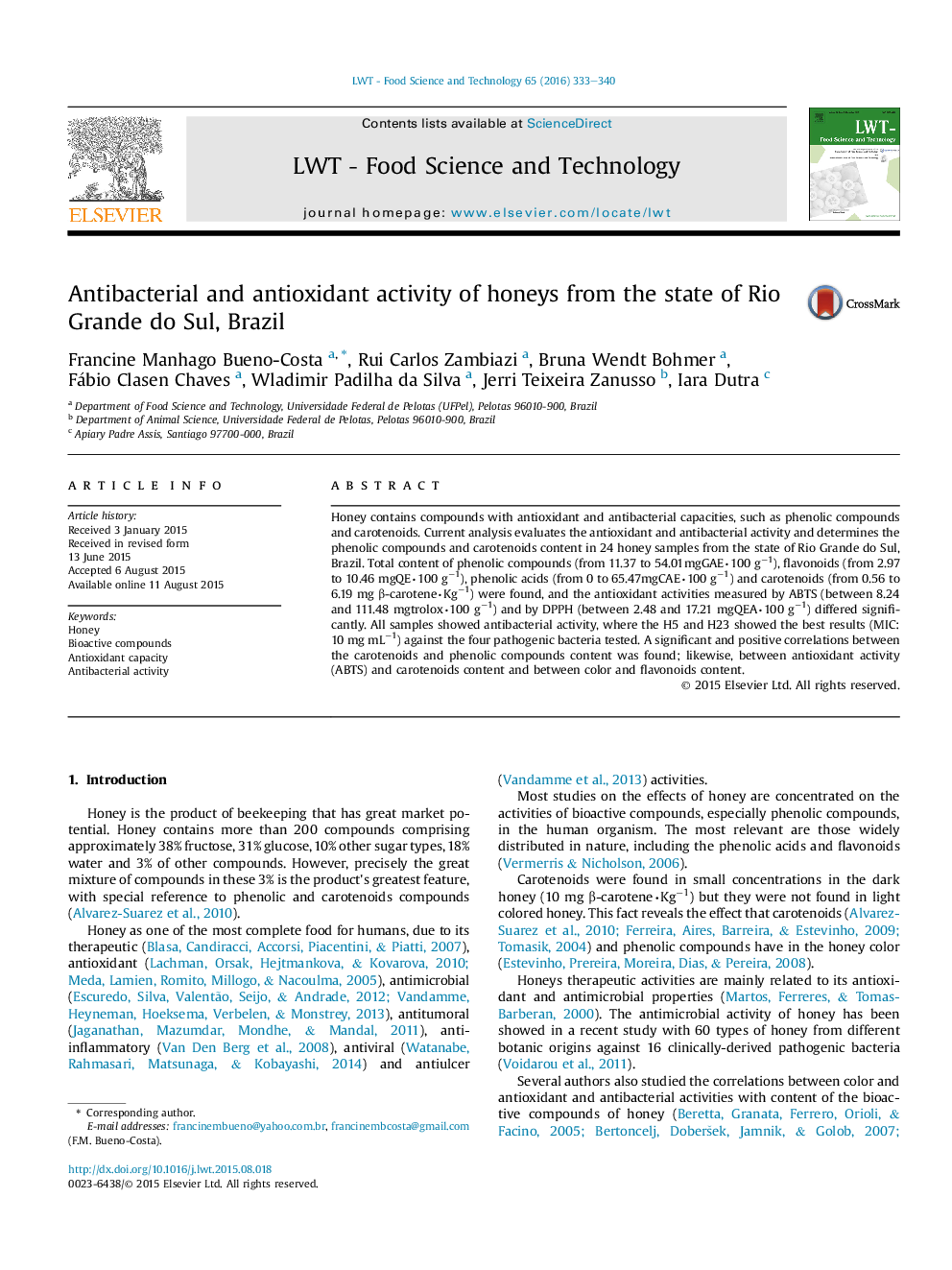| Article ID | Journal | Published Year | Pages | File Type |
|---|---|---|---|---|
| 6401549 | LWT - Food Science and Technology | 2016 | 8 Pages |
â¢Honey provides compounds that confer antioxidant and antibacterial properties.â¢All evaluated honeys showed antibacterial activity.â¢Phenolic acids were the major bioactive compounds found in honey samples.â¢Even the low carotenoid content it was enough to contribute to the honey antioxidant activity.â¢The honey may play an important role as natural antibacterial product.
Honey contains compounds with antioxidant and antibacterial capacities, such as phenolic compounds and carotenoids. Current analysis evaluates the antioxidant and antibacterial activity and determines the phenolic compounds and carotenoids content in 24 honey samples from the state of Rio Grande do Sul, Brazil. Total content of phenolic compounds (from 11.37 to 54.01mgGAEâ100 gâ1), flavonoids (from 2.97 to 10.46 mgQEâ100 gâ1), phenolic acids (from 0 to 65.47mgCAEâ100 gâ1) and carotenoids (from 0.56 to 6.19 mg β-caroteneâKgâ1) were found, and the antioxidant activities measured by ABTS (between 8.24 and 111.48 mgtroloxâ100 gâ1) and by DPPH (between 2.48 and 17.21 mgQEAâ100 gâ1) differed significantly. All samples showed antibacterial activity, where the H5 and H23 showed the best results (MIC: 10 mg mLâ1) against the four pathogenic bacteria tested. A significant and positive correlations between the carotenoids and phenolic compounds content was found; likewise, between antioxidant activity (ABTS) and carotenoids content and between color and flavonoids content.
